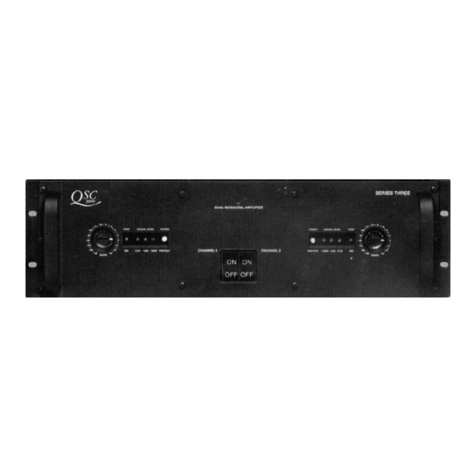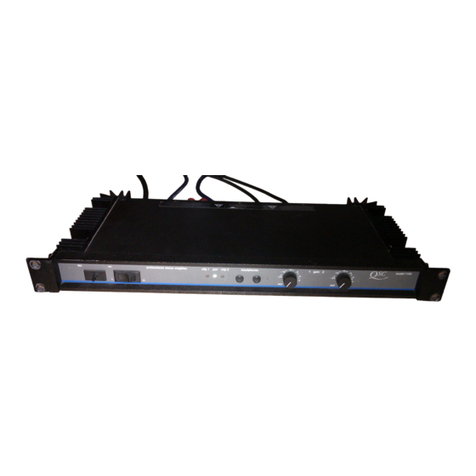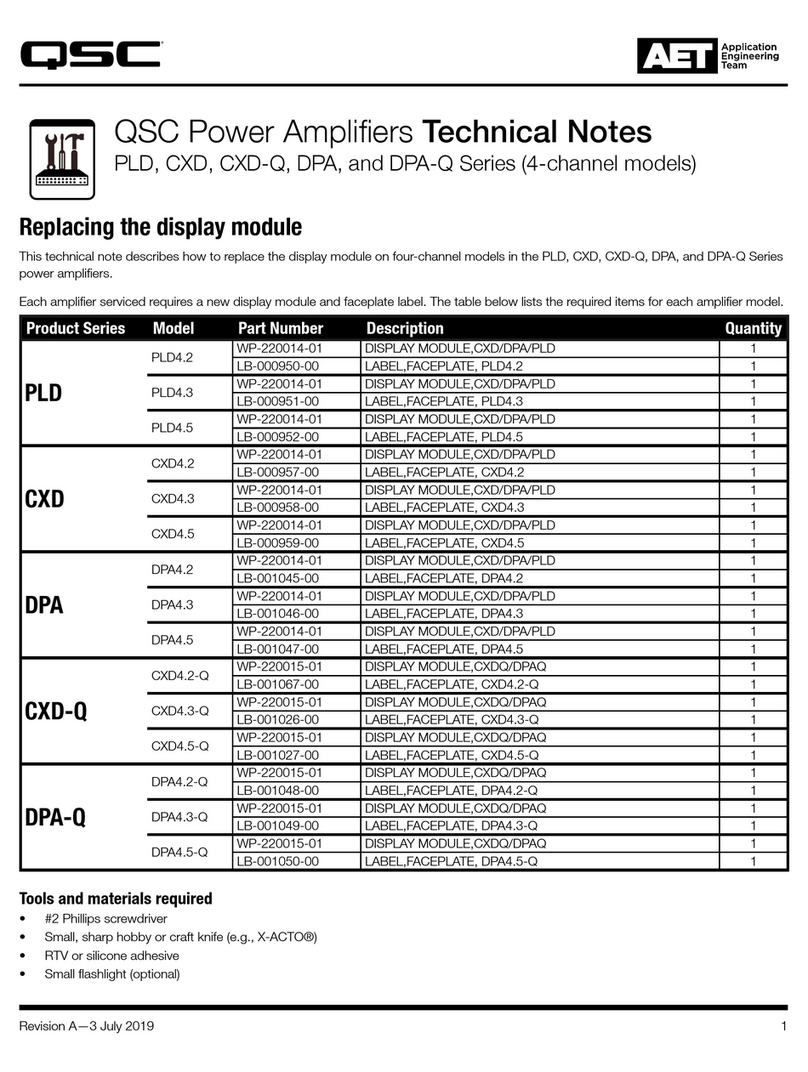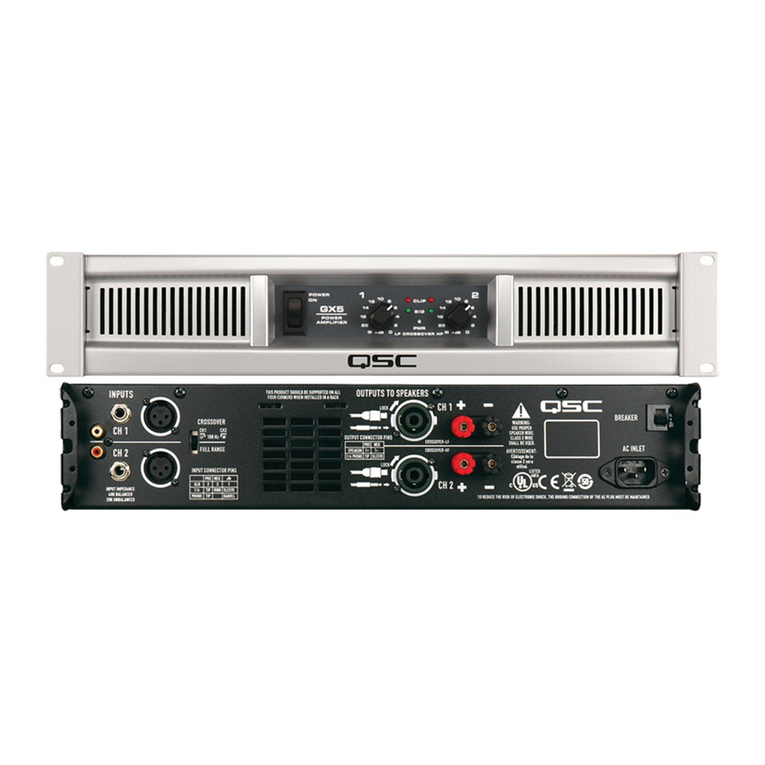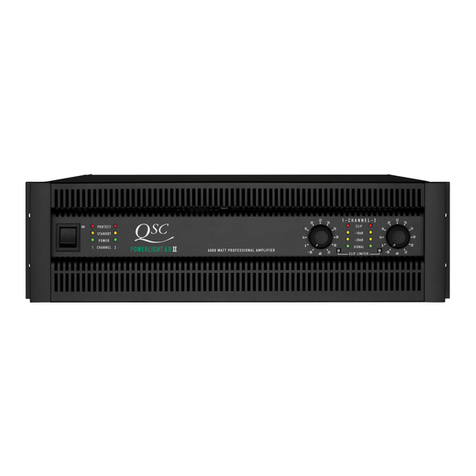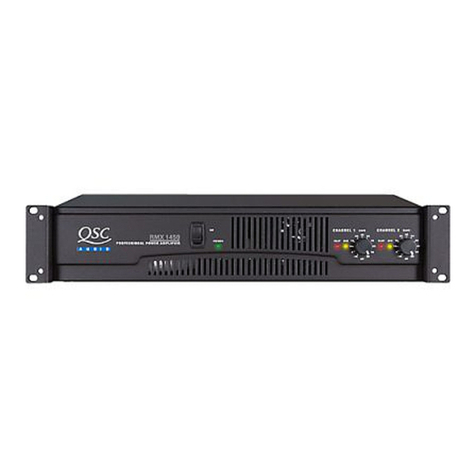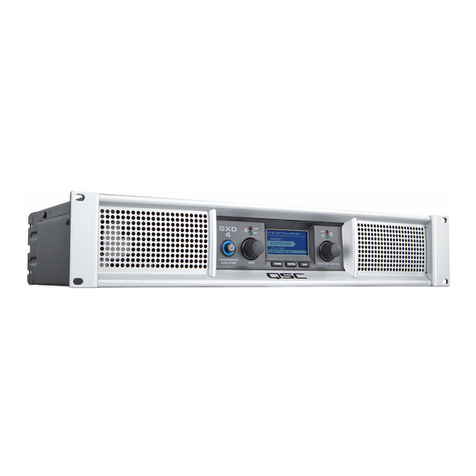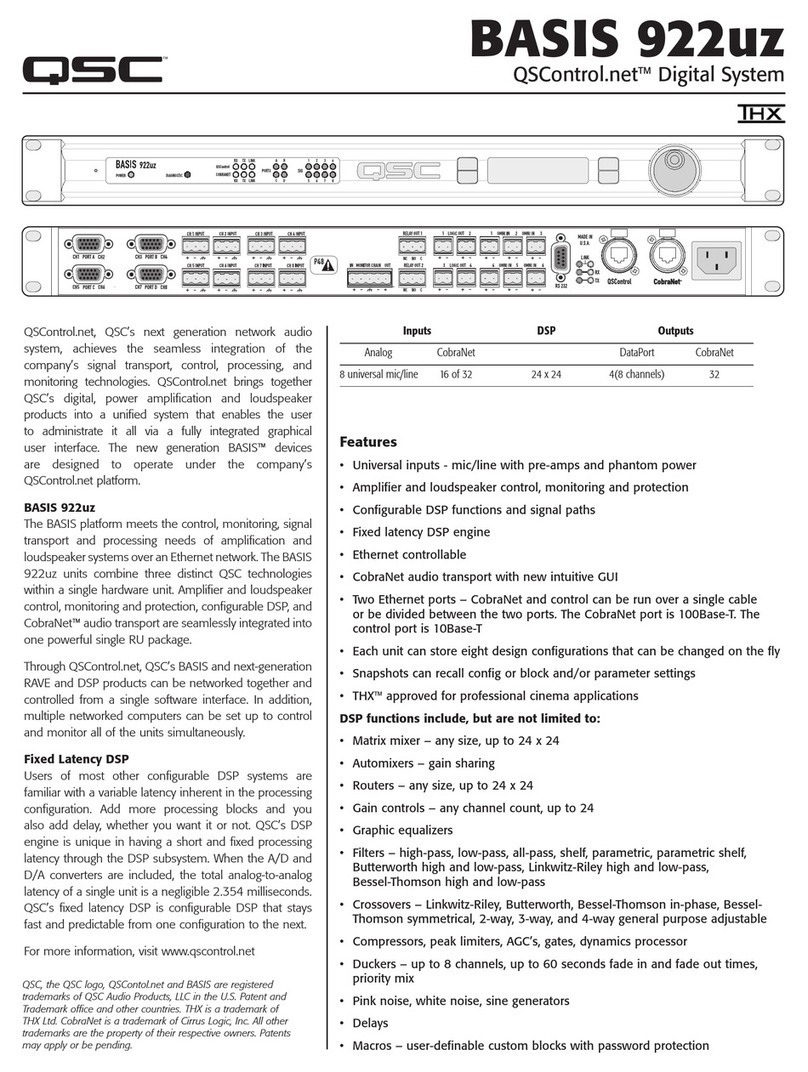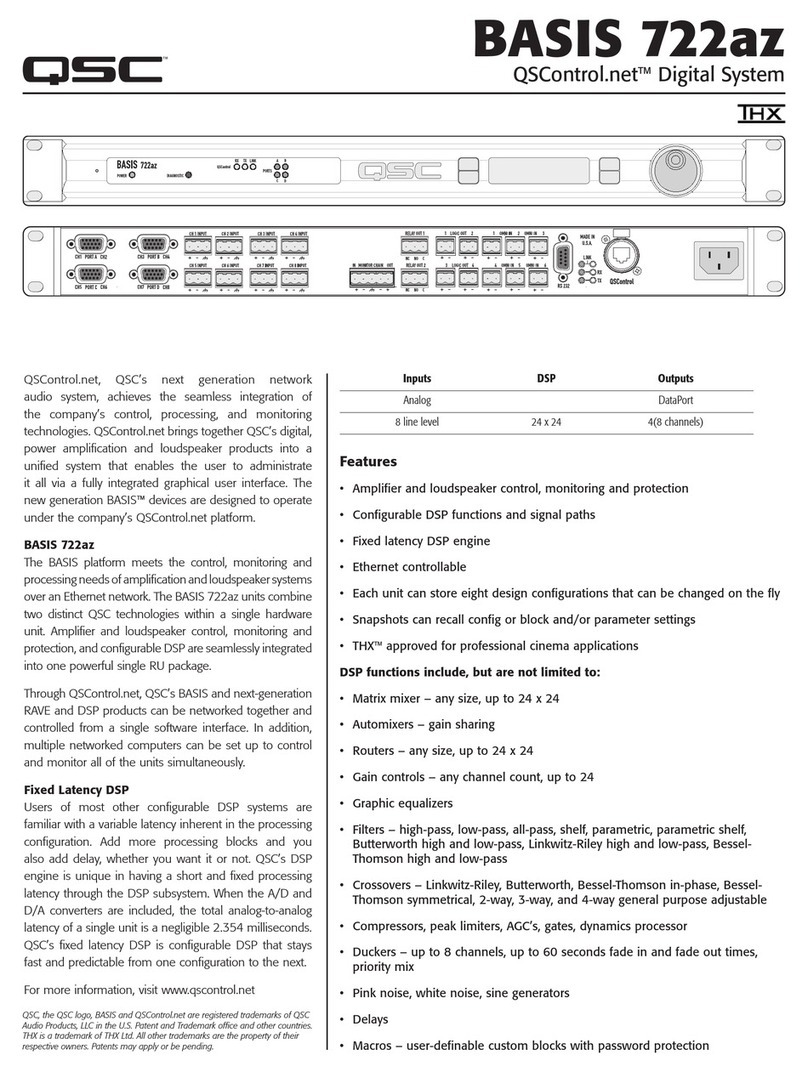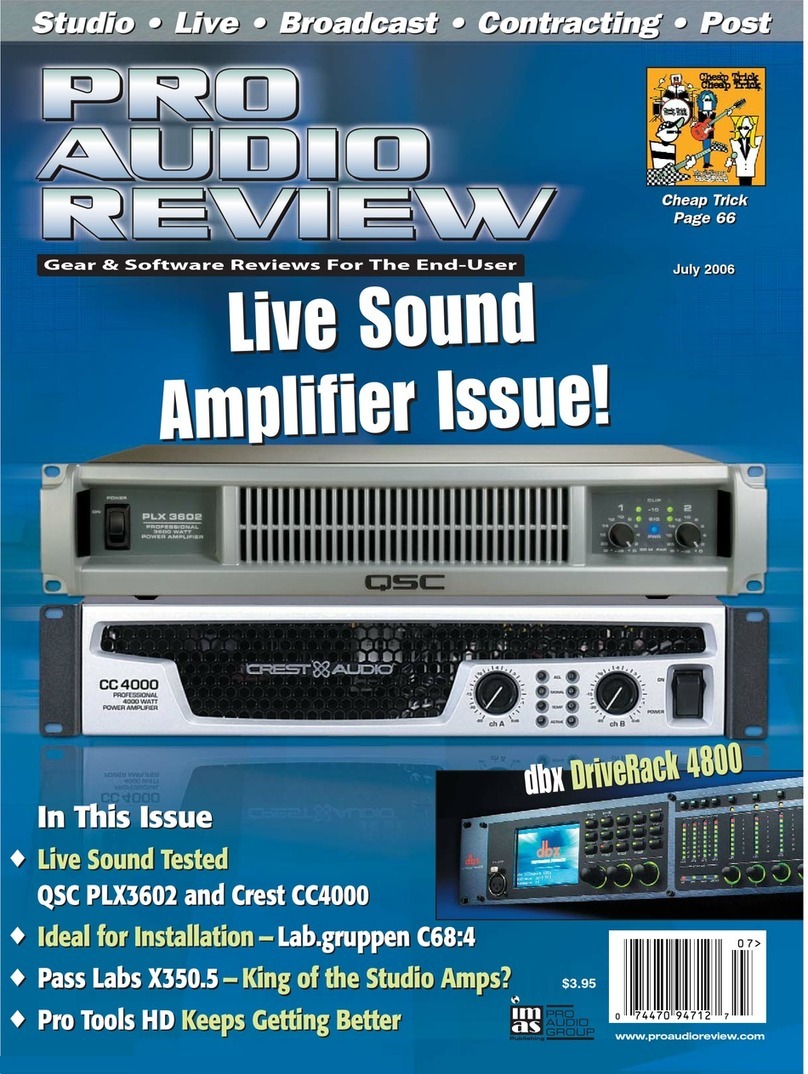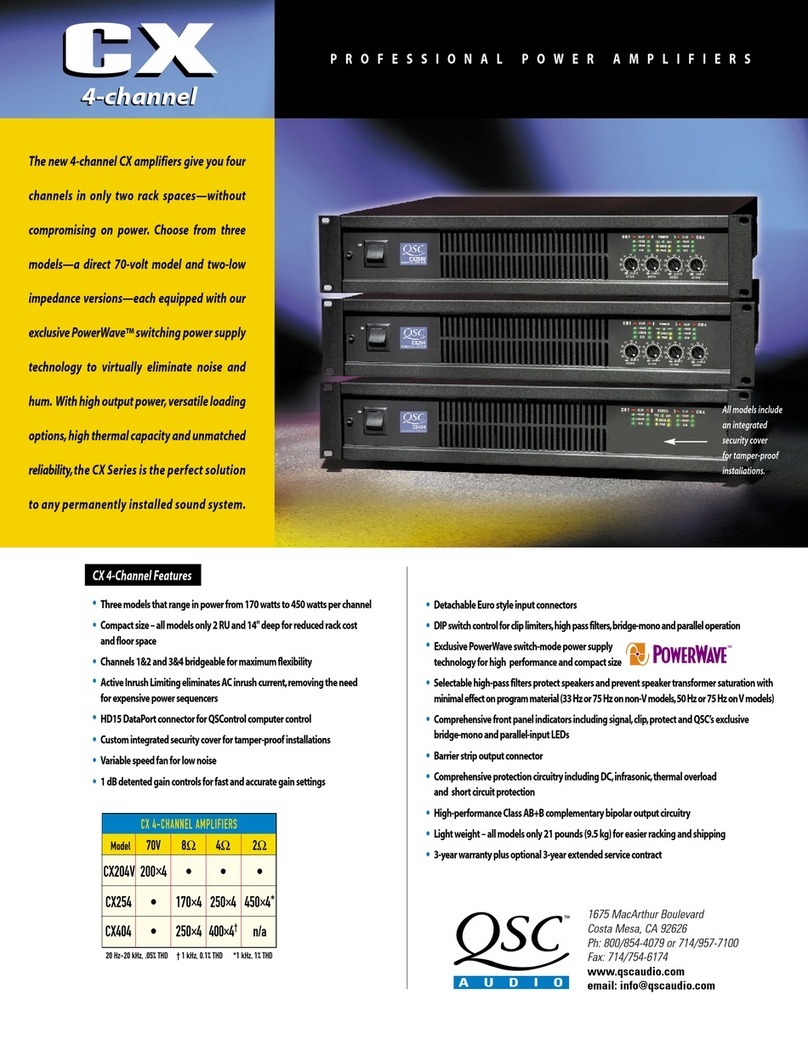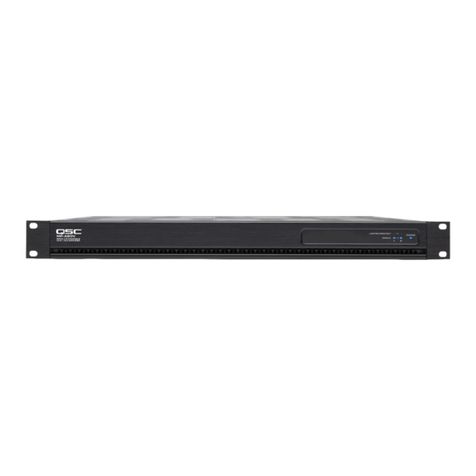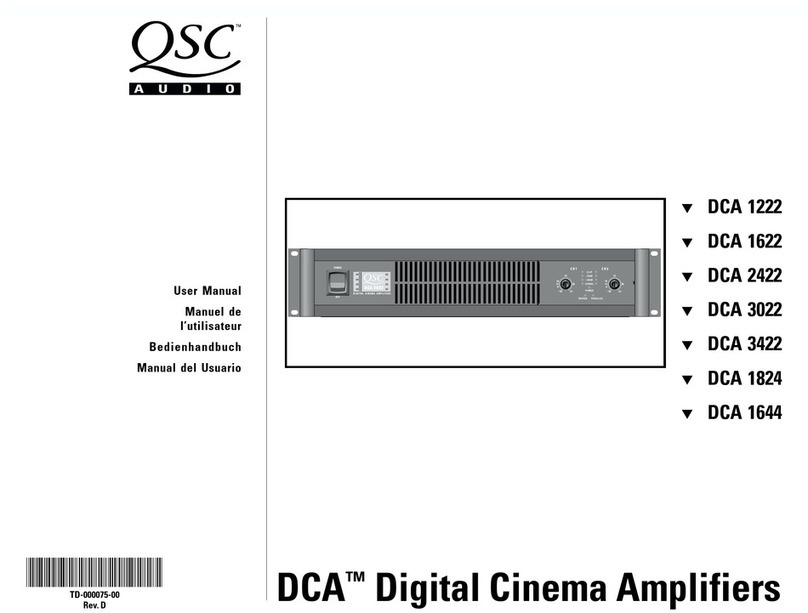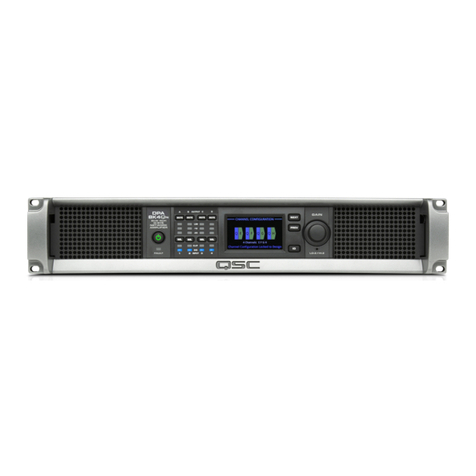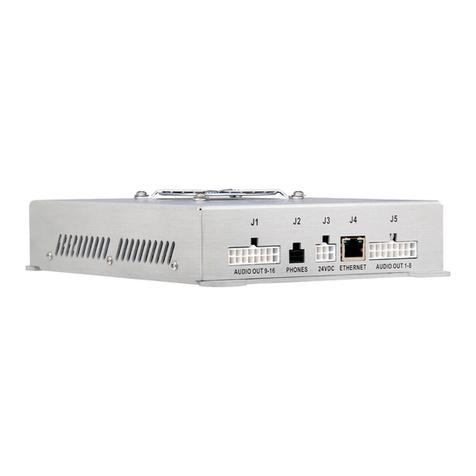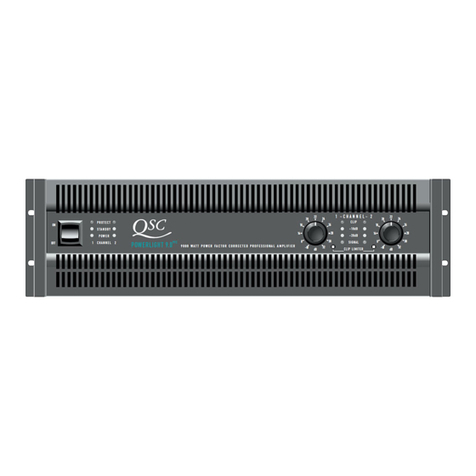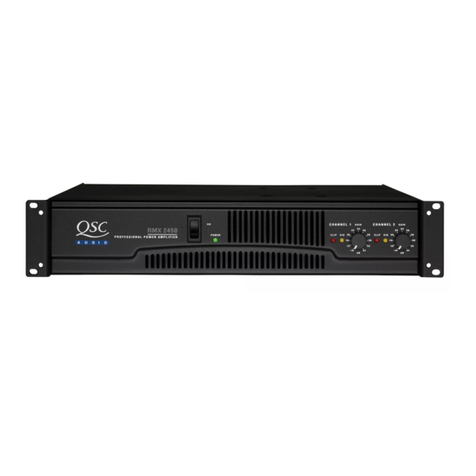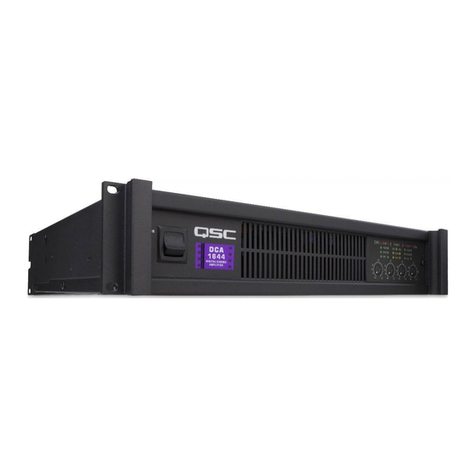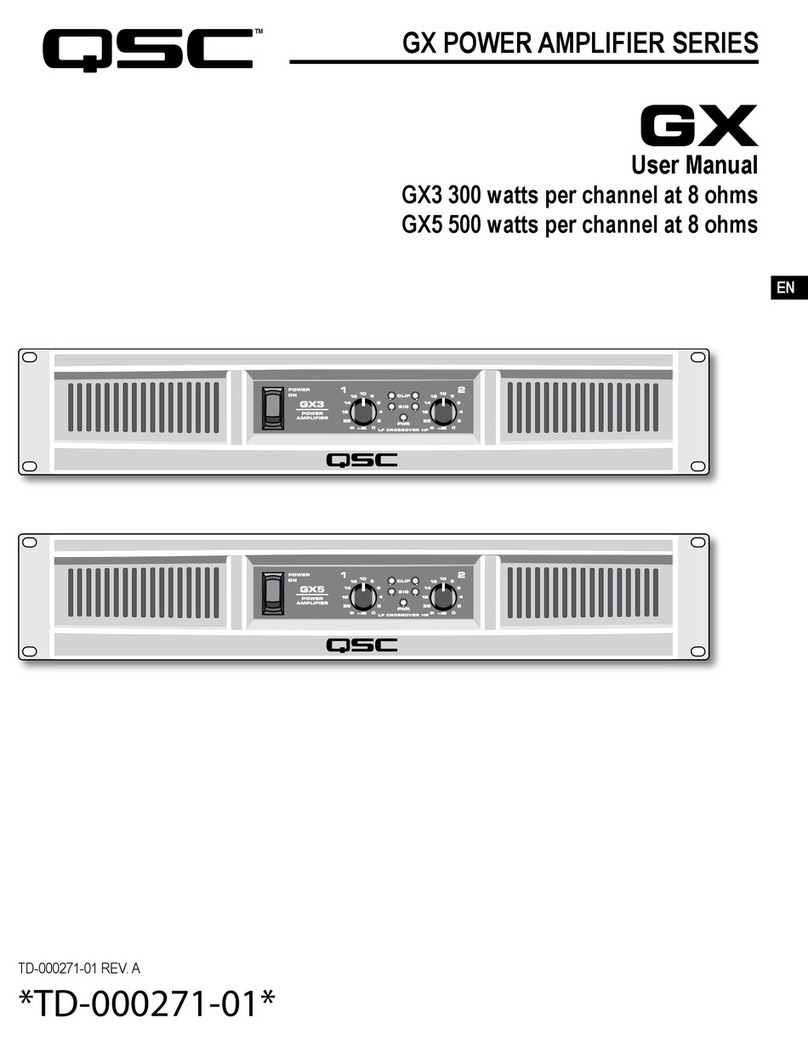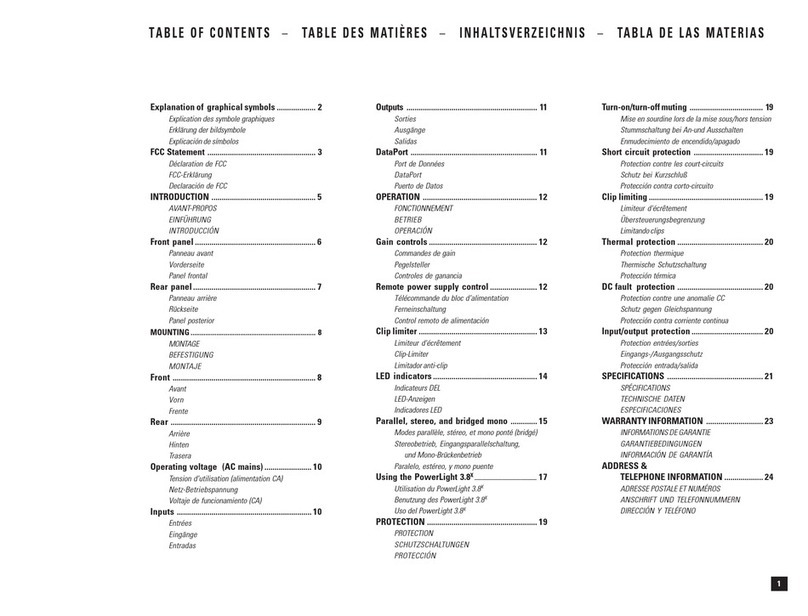
CX Series
I
n t r
o
d uc t i on
This manual is prepared to assist service personnel with the repair and calibration of the
CX Series power amplifiers The procedures described in this manual require advanced
technical experience and sophisticated audio test equipment.
A
A
CAUTION: To reduce the risk of electric shock, do not remove the cover. No
user-
serviceable parts inside. Refer servicing to qualified service personnel.
WARNING: To prevent fire or electric shock, do not expose this equipment to rain
or moisture.
Documentation
This manual contains schematics, printed circuit board (PCB) drawings, parts lists, and
mechanical assembly drawings. This information should be used in conjunction with the test and
troubleshooting guide.
The electrical and electronic components are identified by circuit identification numbers on the
schematics and the parts list, The test
&
troubleshooting sections refer to designations shown in
the schematics.
EquivalentParts
Although many of the electronic components used in this product may be available from
electronic suppliers, some components are specially tested and approved by
QSC.
A product
repaired with non-QSC supplied components may not meet factory specifications.
Repairs
performed using non-QSC parts may void the product warranty, When in doubt, you may contact
QSC
Technical Services for assistance.
Parts orders to
QSC
should include the product model number, the part description, and the QSC
part number (from the parts list in this manual). Parts will be shipped via UPS,
F.O.B.
Costa Mesa,
California, Shipping, handling and COD charges may be added to the cost of the parts.
Factory Repair
It may become necessary to return a product to the factory for repair. Call QSC Technical
Services for return instructions. You must obtain a Return Authorization number from QSC before
returning a product to the factory.
QSC
Technical Services may be reached at (800) 772-2834.
3
